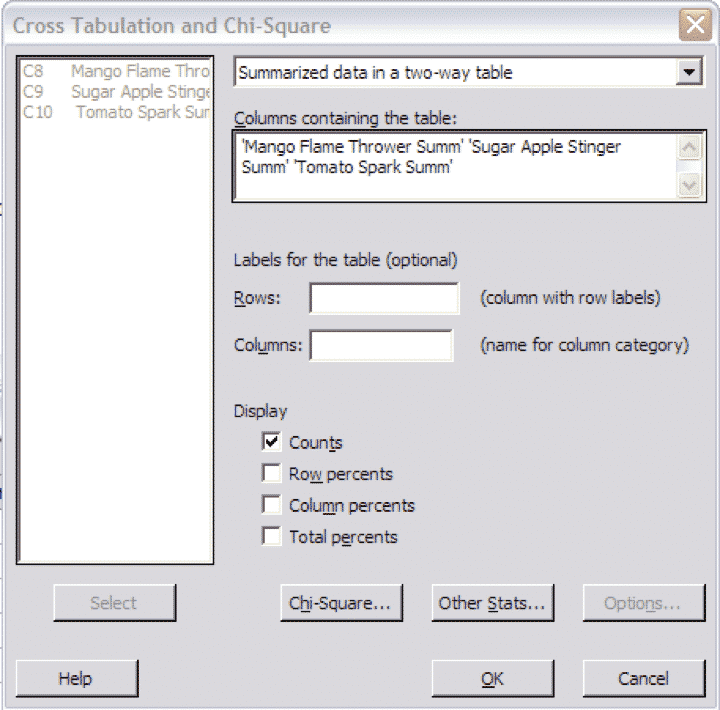


all cells must have expected counts of at least 3 or The Minitab manual criteria are: If either variable has only 2 or 3 categories, then either Some expected counts can be <5, provided none <1, and 80% of the expected counts should be equal to or greater than 5.” More recent standards for a 2 x 2 Table (Campbell 2007) say Fisher’s Exact and Yates Correction are too conservative and proposes alternative tests depending on the study design.įor tables larger than 2 x 2 Yates, Moore & McCabe (1999), state “No more than 20% of the expected counts should be less than 5 and all individual expected counts should be greater or equal to 1.

If =5, Yates’ Correction for continuity should be applied. There are other suggested guidelines too.Īccording to Cochran (1952, 1954), all expected counts should be 10 or greater. If the expected counts are less than 5 then a different test should be used (e.g. Notice in the Observed Data there is a cell with a count of 3. The more different the observed and expected counts are from each other, the larger the chi-square statistic. It is an easy calculation: (Row Total * Column Total)/Total. For example, in the A2, B1 cell, we expect a count of 8.75. The Expected counts come from the row totals, column totals and the overall total, 48. Inside the box are the individual cells, which give the counts for each combination of the two A categories and two B categories. Likewise, 33 are in the A1 category and 15 are in the A2 category.

You can see that out of a total sample size of 48, 28 are in the B1 category and 20 are in the B2 category. Look at the table below, which shows observed counts between two categorical variables, A and B. For example, it’s the criterion SAS uses. Software packages typically supply a warning when this occurs. So if any row or column totals in your contingency table are small, or together are relatively small, you’ll have an expected value that’s too low. Those expected values come from the total sample size, and the corresponding total frequencies of each row and column. One that is large enough that the expected value for each cell is at least 5. (That’s where the asymptotically comes in). That means we can use the chi-square distribution to calculate an accurate p-value only for large samples. The Chi-square statistic follows a chi-square distribution asymptotically with df=n-1. It’s the EXPECTED count that needs to be >5 per cell*. The correct statement is not about the observed in each cell. I frequently hear this mis-understood and incorrect statement. The actual message gets totally distorted over time.įor example, you may have heard this one: “The Chi-Square test is invalid if we have fewer than 5 observations in a cell”. Rules of Thumb are like Urban Myths or like a bad game of ‘Telephone’. We all want rules of thumb even though we know they can be wrong, misleading or misinterpreted.


 0 kommentar(er)
0 kommentar(er)
